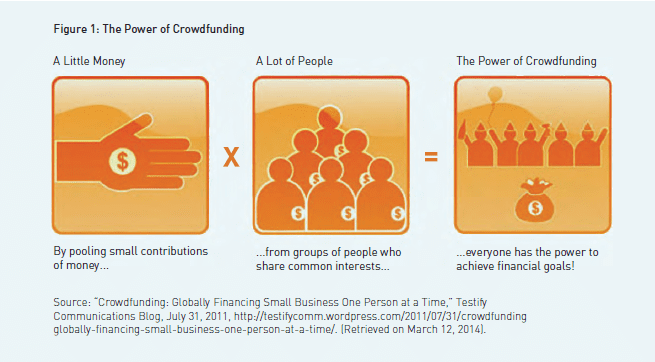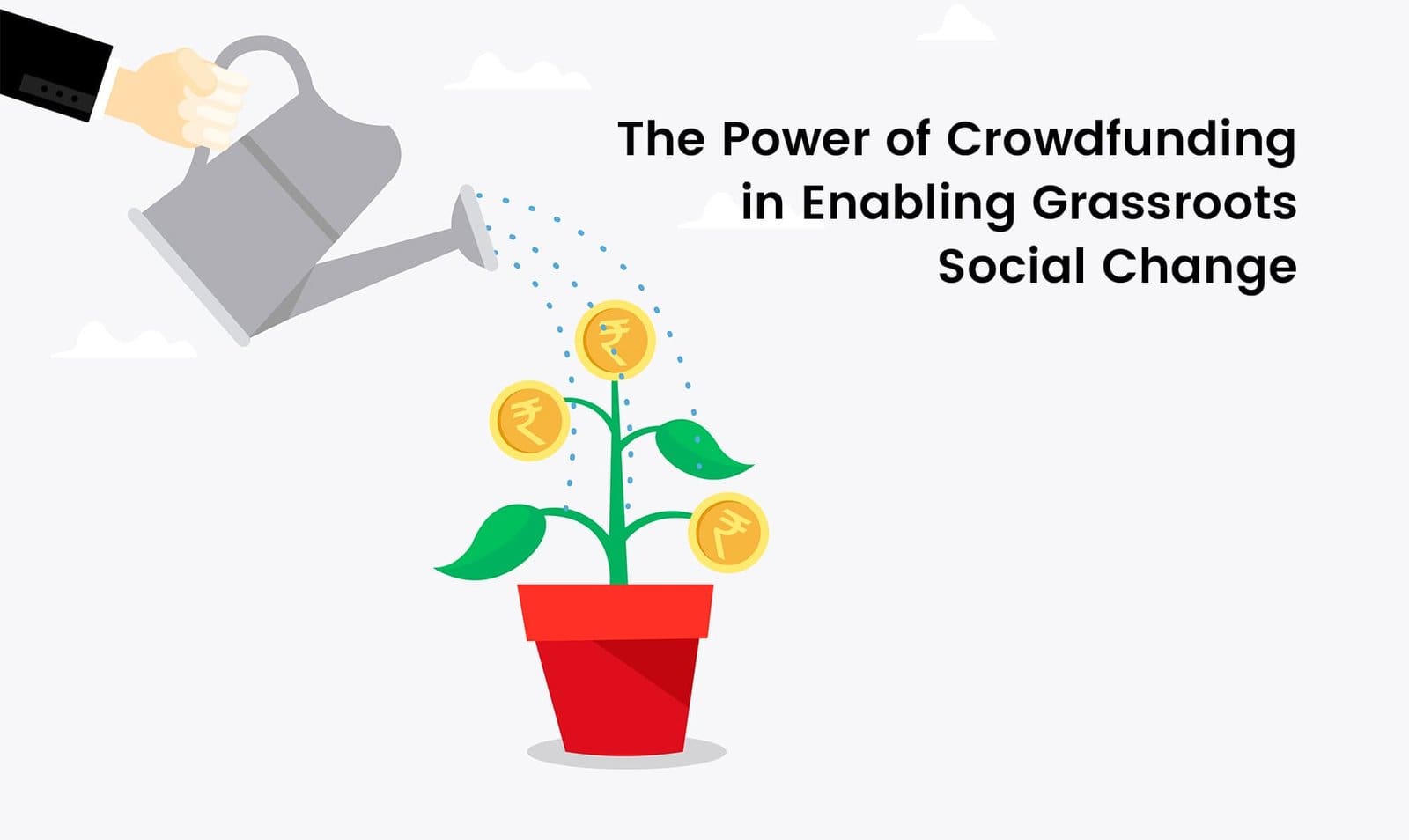Welcome! In this article, we will explore the incredible potential of crowdfunding and how it can empower individuals like you to bring your ideas to life. You will discover how crowdfunding has revolutionized the way people raise money, allowing them to access funds from a wide network of supporters who believe in their vision. With the power of crowdfunding, you can turn your dreams into reality, whether it's launching a new product, funding a creative project, or starting a charitable initiative.
Crowdfunding operates on the principle that even small contributions can make a big difference when pooled together. It provides a platform for you to showcase your project or cause, connect with potential backers, and gain financial support without relying on traditional avenues like banks or investors. The beauty of crowdfunding lies in its inclusivity – anyone can participate, regardless of their financial prowess. So, get ready to harness the power of the crowd, tap into the generosity of others, and embrace the exciting opportunities that await you in the world of crowdfunding.

What is Crowdfunding
Definition of Crowdfunding
Crowdfunding, also known as crowdsourcing, is the practice of raising capital or funds for a project, venture, or cause by collecting small contributions from a large number of people, typically via the internet. It has gained popularity in recent years as a viable alternative to traditional methods of financing, such as bank loans or venture capital.
The concept of Crowdfunding
The concept of crowdfunding revolves around the idea that a collective effort can lead to the success of a project or venture. Instead of relying on a few wealthy individuals or institutions, crowdfunding enables entrepreneurs, artists, and individuals with innovative ideas to tap into the support of a larger group of people who are willing to contribute small amounts of money towards the realization of their vision.
Benefits of Crowdfunding
Crowdfunding offers numerous benefits for both project creators and backers. For project creators, it provides access to capital, market validation, the opportunity to build a community and customer base, and exposure and publicity. Backers, on the other hand, have the opportunity to support innovative projects, gain access to unique products or experiences, and potentially enjoy financial returns.
Types of Crowdfunding
Reward-based Crowdfunding
Reward-based crowdfunding is one of the most common types of crowdfunding. In this model, project creators offer different tiers of rewards or perks to backers based on their level of contribution. These rewards can range from exclusive merchandise, early access to products, or even personalized experiences. This type of crowdfunding is often used by entrepreneurs and artists to fund their creative projects or product development.
Equity Crowdfunding
Equity crowdfunding, also known as investment crowdfunding, allows backers to become investors in a project or venture. In this model, backers receive equity or shares in the project in exchange for their financial contribution. This type of crowdfunding is more suitable for businesses or startups that are seeking larger amounts of funding and are willing to give up a percentage of ownership to investors.
Debt Crowdfunding
Debt crowdfunding, also known as peer-to-peer lending, involves individuals lending money to businesses or individuals in need of capital. Unlike traditional bank loans, debt crowdfunding platforms connect borrowers directly with lenders, bypassing the need for intermediaries. This type of crowdfunding is particularly useful for small businesses or individuals who may have difficulty accessing loans from traditional financial institutions.
Donation-based Crowdfunding
Donation-based crowdfunding is often used by charitable organizations or individuals who are looking to raise funds for a specific cause or to help those in need. In this model, backers contribute money without the expectation of any monetary return or rewards. Instead, they are motivated by the desire to support a cause they believe in and make a positive impact.

The Rise of Crowdfunding
Early history of Crowdfunding
While the concept of crowdfunding may seem like a relatively modern phenomenon, its roots can be traced back centuries. In the 17th century, the construction of the pedestal for the Statue of Liberty in New York was funded through a crowdfunding campaign that involved the solicitation of donations from the public. However, it wasn't until the advent of the internet that crowdfunding truly began to take off.
Impact of the internet
The internet revolutionized the way people connect and share information, making it easier for individuals to reach potential backers from all corners of the globe. Platforms such as Kickstarter and Indiegogo emerged in the early 2000s, providing individuals and businesses with a dedicated space to showcase their projects and raise funds. The internet's ability to democratize access to capital and facilitate global connections has significantly contributed to the rise of crowdfunding.
Success stories of Crowdfunding
Over the years, crowdfunding has been responsible for numerous success stories. One notable example is the Pebble Time smartwatch, which set a record on Kickstarter by raising over $20 million from nearly 80,000 backers in just over a month. Another success story is the card game “Exploding Kittens,” which raised over $8 million in 30 days on Kickstarter, becoming the most backed Kickstarter project of all time. These success stories illustrate the power of crowdfunding in enabling innovative ideas to come to fruition.
How Crowdfunding Works
Creating a Crowdfunding campaign
To create a crowdfunding campaign, project creators typically start by choosing a crowdfunding platform that aligns with their project's goals and target audience. They then create a compelling campaign page that highlights the project's unique selling points, its potential impact, and any rewards or perks offered to backers.
Setting goals and rewards
Project creators set a funding goal, which represents the amount of money needed to successfully complete the project. This goal should be realistic and take into consideration the expenses required to fulfill the promised rewards. Project creators also determine the different tiers or levels of rewards based on the amount contributed by backers.
Promoting the campaign
Once the campaign is live, project creators must actively promote it to generate awareness and attract potential backers. This typically involves leveraging social media platforms, reaching out to influencers or journalists in the relevant industry, engaging with existing supporters, and participating in relevant communities or forums.
Managing backer expectations
Throughout the campaign, project creators need to keep their backers informed and engaged. This can be done through regular updates on the campaign's progress, sharing behind-the-scenes content, and addressing any questions or concerns raised by backers. Effective communication is crucial in building trust and maintaining a positive relationship with backers.

Benefits of Crowdfunding for Entrepreneurs
Access to capital
One of the primary benefits of crowdfunding for entrepreneurs is the access to capital it provides. Traditional methods of financing, such as bank loans or venture capital, can be difficult to obtain, especially for early-stage businesses or individuals without a proven track record. Crowdfunding allows entrepreneurs to tap into a wider pool of potential backers and secure the necessary funding to bring their ideas to life.
Market validation
Crowdfunding also serves as a powerful market validation tool. By presenting their projects to a diverse group of backers, entrepreneurs can gauge the level of interest and demand for their product or service. If a crowdfunding campaign is successful in reaching or surpassing its funding goal, it indicates that there is a market for the product or idea, giving entrepreneurs greater confidence in their project's viability.
Building a community and customer base
Crowdfunding campaigns provide a unique opportunity for entrepreneurs to build a community around their project. Backers who believe in the project's vision and values often become strong advocates and supporters. By engaging with these backers throughout the campaign and beyond, entrepreneurs can establish a loyal customer base that can provide valuable feedback, referrals, and ongoing support.
Gaining exposure and publicity
Successful crowdfunding campaigns often attract media attention, allowing entrepreneurs to gain exposure and publicity for their projects. This increased visibility can open doors to additional business opportunities, partnerships, or even investment from external sources. Crowdfunding can serve as a stepping stone for entrepreneurs to showcase their capabilities and attract further interest in their ventures.
Benefits of Crowdfunding for Backers
Opportunity to support innovative projects
One of the key benefits of crowdfunding for backers is the opportunity to support innovative projects or ideas that may not have access to traditional financing models. By contributing to a crowdfunding campaign, backers can play a direct role in bringing these ideas to life and supporting the growth of creativity and innovation.
Access to unique products or experiences
Many crowdfunding campaigns offer exclusive rewards or perks to backers, giving them access to unique products or experiences that may not be available through traditional retail channels. These limited-edition items or personalized experiences can provide backers with a sense of exclusivity and the satisfaction of being early supporters of a project.
Potential financial returns
In equity crowdfunding campaigns, backers have the potential to reap financial returns if the project or venture is successful. As investors, they become shareholders in the project and can benefit from any profits or dividends generated. This opportunity for financial gain adds an extra incentive for backers to support crowdfunding campaigns.

Challenges and Risks of Crowdfunding
High competition for attention and funding
As crowdfunding platforms continue to grow in popularity, the competition for attention and funding has intensified. With thousands of projects vying for the limited attention of potential backers, it can be challenging for new campaigns to stand out and attract the necessary support. Crowdfunding requires diligent planning, marketing, and differentiation to overcome this challenge.
Managing expectations and delivering on promises
Crowdfunding campaigns often come with the expectation that the project will be successfully completed and rewards will be delivered as promised. However, unforeseen challenges or setbacks can arise during the project's execution, leading to delays or modifications to the original plan. Project creators must effectively communicate any changes or issues to backers, managing expectations and ensuring transparency throughout the process.
Risk of fraud and failed projects
While crowdfunding has empowered many individuals and businesses, it also carries inherent risks. There have been instances of fraudulent campaigns or projects that were unable to deliver on their promises. Backers must exercise caution and conduct due diligence before contributing to a crowdfunding campaign to minimize the risk of falling victim to scams or supporting projects that ultimately fail.
Tips for a Successful Crowdfunding Campaign
Research and plan your campaign
Before launching a crowdfunding campaign, it is essential to conduct thorough research and plan accordingly. Understand the unique aspects of your project and identify your target audience. Study successful campaigns in your industry and learn from their strategies and approaches. Having a solid plan in place will increase your chances of success.
Tell a compelling story
Effectively communicate the story behind your project and its potential impact. Be authentic and passionate in your messaging, as this will resonate with potential backers and make them more likely to support your campaign. Use visuals, videos, and personal anecdotes to bring your project to life and make a lasting impression.
Leverage social media and networking
Utilize the power of social media platforms and online networks to promote your campaign. Establish an online presence before launching your crowdfunding campaign and leverage these platforms to engage with potential backers. Reach out to influencers or industry leaders who may be interested in supporting your project and ask for their help in spreading the word.
Showcase credibility and trust
Build trust with potential backers by showcasing your credentials, expertise, and track record, if applicable. Be transparent about your project's progress, challenges, and how funds will be utilized. Including testimonials or endorsements from trusted individuals or organizations can also boost credibility and instill confidence in potential backers.

Case Studies of Successful Crowdfunding Campaigns
Pebble Time
Pebble Time, a smartwatch manufacturer, launched a crowdfunding campaign on Kickstarter in 2015 with a funding goal of $500,000. The campaign quickly gained traction, surpassing its goal within minutes and going on to raise a total of over $20 million. The success of the campaign allowed Pebble Time to develop and manufacture their smartwatch, establishing them as a leading player in the wearable technology industry.
Exploding Kittens
“Exploding Kittens,” a strategic card game created by Elan Lee, Matthew Inman, and Shane Small, set a new record on Kickstarter when it raised over $8 million in just 30 days. The witty and engaging campaign video, combined with a well-designed and humorous card game, captured the attention of backers worldwide. The successful campaign enabled the creators to produce and deliver the game to thousands of backers.
OUYA
OUYA, a gaming console developer, launched its crowdfunding campaign on Kickstarter with a goal of $950,000 in 2012. The project gained significant attention and support, ultimately raising over $8 million from backers who were excited about the prospect of an open-source gaming console. The success of the campaign allowed OUYA to bring their console to market and challenge established players in the gaming industry.
Legal and Regulatory Considerations for Crowdfunding
Crowdfunding regulations in different countries
Crowdfunding regulations vary from country to country, and entrepreneurs must be aware of the legal and regulatory requirements that govern their campaign. These regulations may include restrictions on the maximum amount that can be raised, disclosure requirements, and investor protections. It is crucial to consult with legal professionals or crowdfunding experts to ensure compliance with local regulations.
Investor protection and disclosures
In certain types of crowdfunding, such as equity crowdfunding, investors are provided with certain protections and disclosures to ensure they are making informed decisions. This may include access to financial statements, risk disclosures, and information about the project's management team. Entrepreneurs must be transparent and provide accurate and complete information to potential investors to maintain trust and comply with regulations.
Tax implications
Crowdfunding may have tax implications for both project creators and backers. Project creators may be required to report the funds raised as income and potentially pay taxes on the amounts received. Backers may need to report any financial returns or rewards received as taxable income. It is crucial to consult with tax professionals or financial advisors to understand the specific tax implications of crowdfunding in your jurisdiction.
Crowdfunding for Non-Profit Organizations
Fundraising for charitable causes
Crowdfunding has become increasingly popular among non-profit organizations as a way to raise funds for charitable causes. By sharing their mission and impact, non-profits can engage potential donors and supporters who are passionate about making a difference. Crowdfunding allows non-profits to reach a wider audience and attract smaller individual contributions that, when combined, can have a significant impact.
Engaging donors and supporters
Crowdfunding campaigns provide an opportunity for non-profits to engage their donors and supporters on a deeper level. By sharing updates on the impact of their work and involving backers in the decision-making process, non-profits can foster a sense of ownership and belonging. Crowdfunding can also serve as a platform for non-profits to educate the public about their cause and raise awareness about social and environmental issues.
Transparency and accountability
Transparency and accountability are crucial in crowdfunding campaigns for non-profit organizations. Potential backers need to trust that their contributions will be used effectively and for the intended purpose. Non-profits must provide clear information on how the funds will be utilized, regularly communicate the progress of their projects, and provide reports or evaluations on the impact achieved.
The Future of Crowdfunding
Emerging trends in Crowdfunding
Crowdfunding continues to evolve, with new trends and innovations constantly emerging. One emerging trend is the use of artificial intelligence and machine learning algorithms to optimize crowdfunding campaigns and help project creators improve their chances of success. Additionally, the integration of virtual and augmented reality technologies into crowdfunding platforms is expected to enhance the backer experience and offer more immersive ways to engage with projects.
Integration with blockchain technology
Blockchain technology has the potential to revolutionize crowdfunding by increasing transparency, improving security, and eliminating the need for intermediaries. Smart contracts enabled by blockchain can automate the distribution of rewards and ensure compliance with the agreed terms. This technology also provides backers with greater transparency into how their funds are utilized by project creators.
Impact on traditional financing models
Crowdfunding has already disrupted traditional financing models by providing an alternative source of capital for entrepreneurs and individuals. The continued growth of crowdfunding platforms and increased awareness of its benefits may lead to a shift in the way businesses and individuals approach financing. Traditional models, such as bank loans and venture capital, may need to adapt to compete with the accessibility, speed, and flexibility offered by crowdfunding.
Crowdfunding and Innovation
Supporting innovation and disruptive ideas
Crowdfunding has become an important tool for supporting innovation and disruptive ideas that may struggle to secure funding through traditional channels. By providing an open platform for individuals and businesses to showcase their innovative projects, crowdfunding enables potential backers to identify and support ideas that have the potential to make a significant impact on society.
Empowering individuals and marginalized communities
Crowdfunding has empowered individuals and marginalized communities by democratizing access to capital. People from diverse backgrounds and regions now have the opportunity to showcase their ideas and gain support from a global audience. This inclusivity creates a level playing field where the quality of the idea and its potential impact matter more than traditional barriers to entry.
Conclusion
In conclusion, crowdfunding has emerged as a powerful tool for entrepreneurs, artists, non-profit organizations, and individuals with innovative ideas to raise capital, validate their projects, and build communities. Through various crowdfunding models like reward-based, equity-based, debt-based, and donation-based, individuals and businesses can secure the necessary funding to turn their ideas into reality. Crowdfunding offers countless benefits, including access to capital, market validation, building communities, and gaining exposure. However, it also presents challenges such as competition for attention, managing expectations, and the risk of fraud. By following best practices and leveraging the power of social media and networking, entrepreneurs can increase their chances of running successful crowdfunding campaigns. The future of crowdfunding looks promising, with emerging trends such as blockchain integration and the use of artificial intelligence offering new possibilities. As crowdfunding continues to evolve, it will shape the future of innovation, empower individuals and communities, and challenge traditional financing models. The power of crowdfunding lies in its ability to mobilize collective support and democratize access to capital, encouraging individuals to explore and participate in crowdfunding initiatives to support the ideas and projects they believe in.





